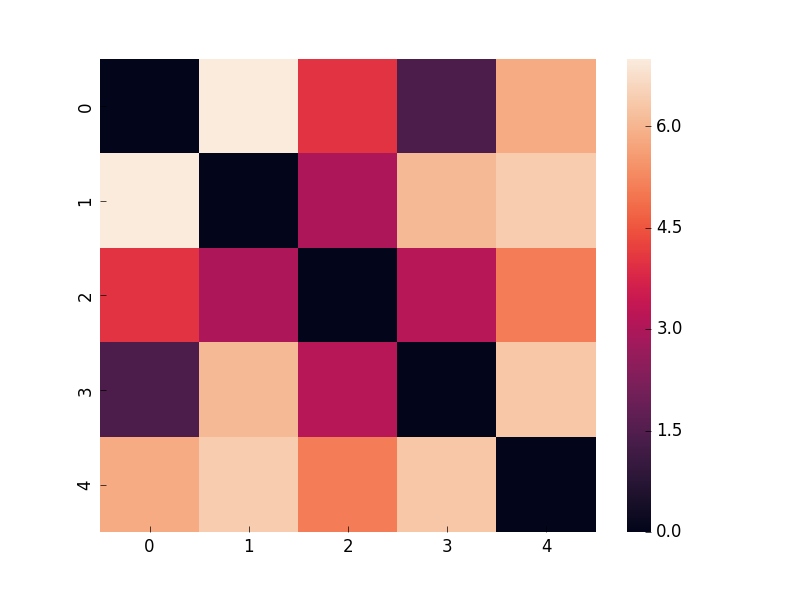目標
行列$M$の行$m_i, m_j$の距離からなる距離行列$dist(M)$を作る。
M =
\begin{pmatrix}
m_1 \\
m_2 \\
\vdots \\
m_k
\end{pmatrix}\\
dist(M) =
\begin{pmatrix}
dist(m_1,m_1) & dist(m_1,m_2) & \dots & dist(m_1,m_k)\\
dist(m_2,m_1) & dist(m_2,m_2) & & \vdots\\
\vdots & & \ddots & \\
dist(m_k,m_1) & \dots & & dist(m_k,m_k)
\end{pmatrix}
ソース
import numpy as np
from scipy.spatial import distance
M = np.random.randint(0, 10, (5, 2))
dist_M = distance.cdist(M, M, metric='euclidean')
# M =>
# [[8 7]
# [8 0]
# [8 3]
# [9 6]
# [3 4]]
# dist_M =>
# [[ 0. 7. 4. 1.41421356 5.83095189]
# [ 7. 0. 3. 6.08276253 6.40312424]
# [ 4. 3. 0. 3.16227766 5.09901951]
# [ 1.41421356 6.08276253 3.16227766 0. 6.32455532]
# [ 5.83095189 6.40312424 5.09901951 6.32455532 0. ]]
おまけ
import seaborn as sns
import matplotlib.pyplot as plt
sns.heatmap(dist_M)
plt.show()
$m_0$と$m_3$の距離が小さいことが視覚的にもわかりやすくなります。

参考
https://docs.scipy.org/doc/scipy/reference/generated/scipy.spatial.distance.cdist.html
https://seaborn.pydata.org/generated/seaborn.heatmap.html